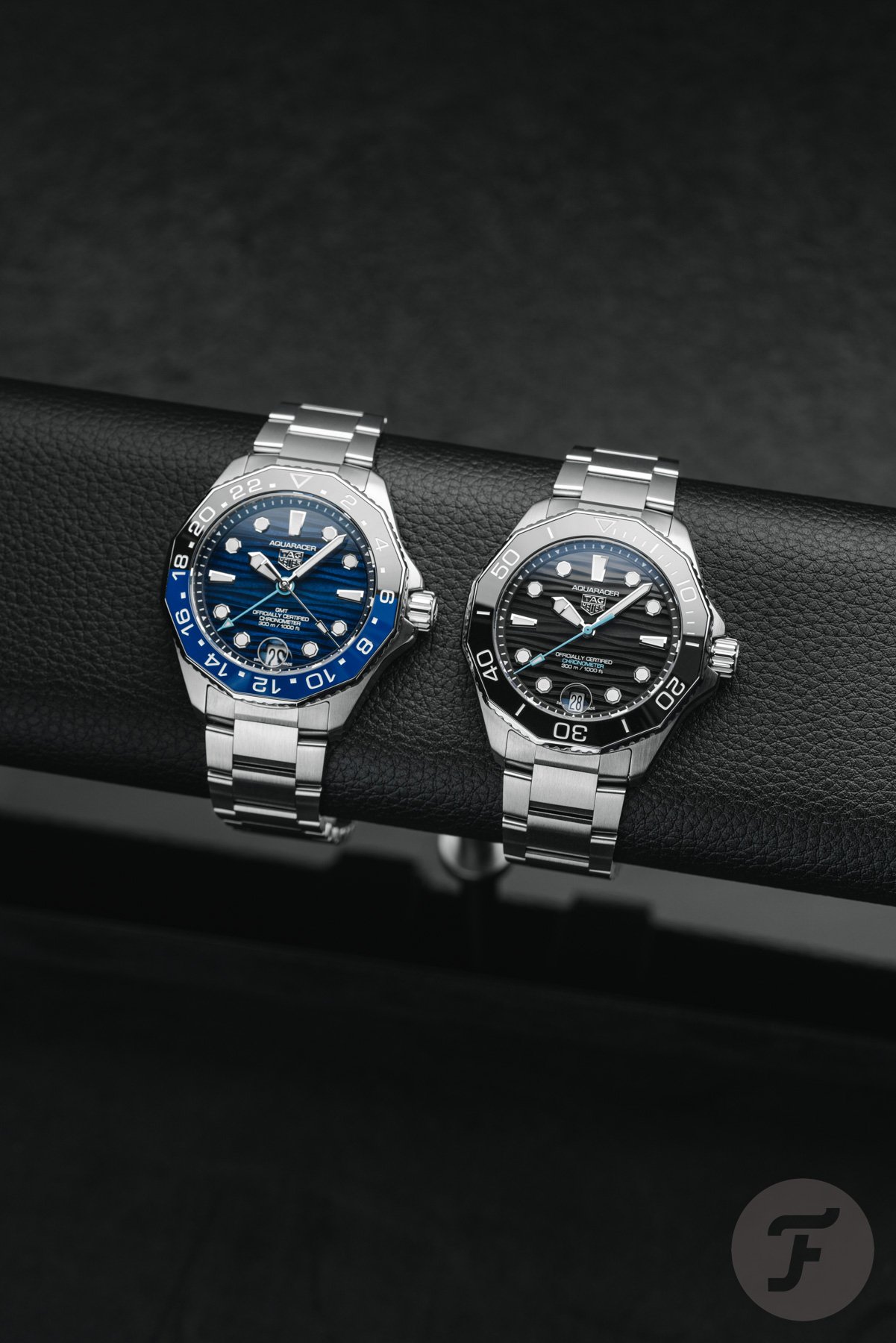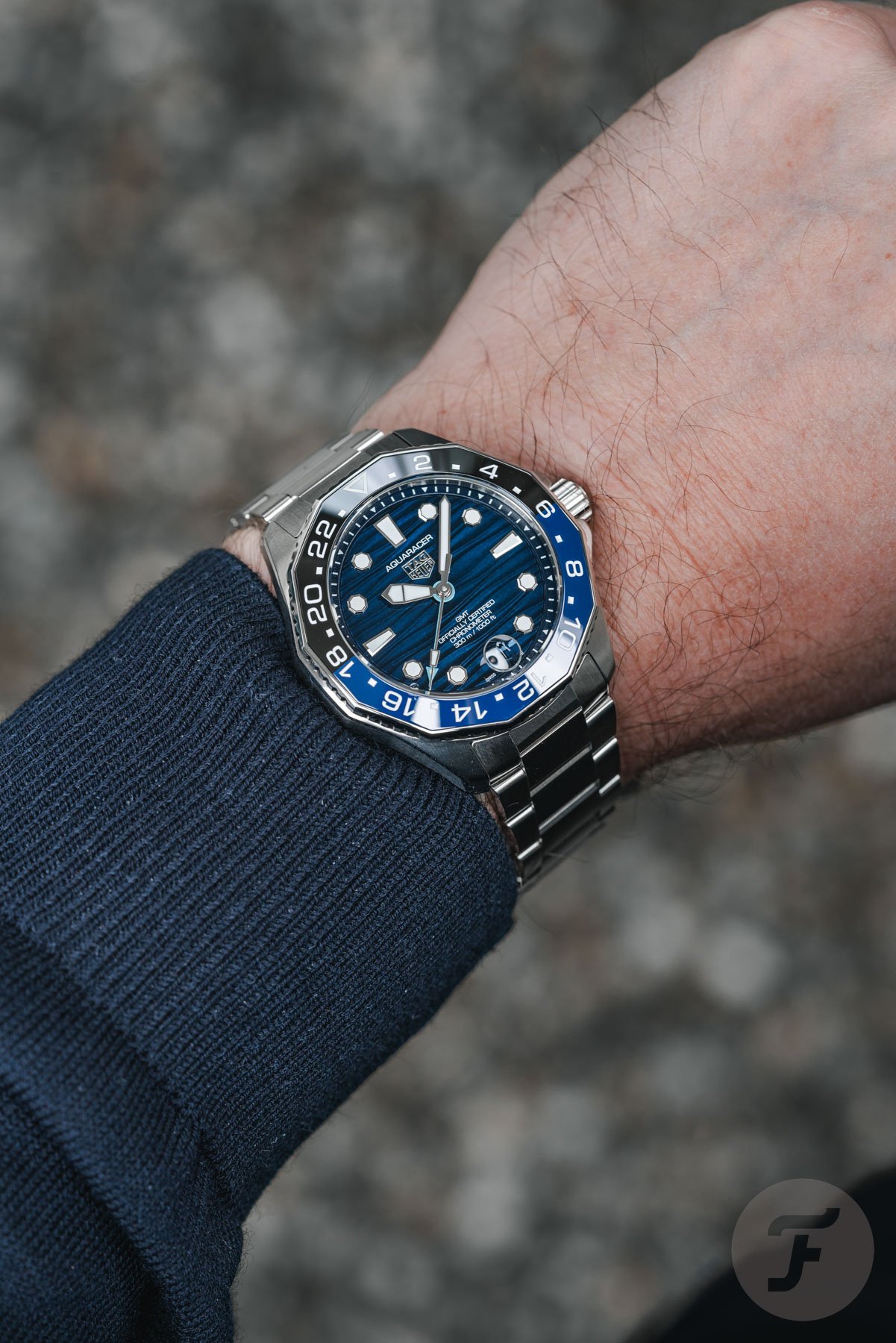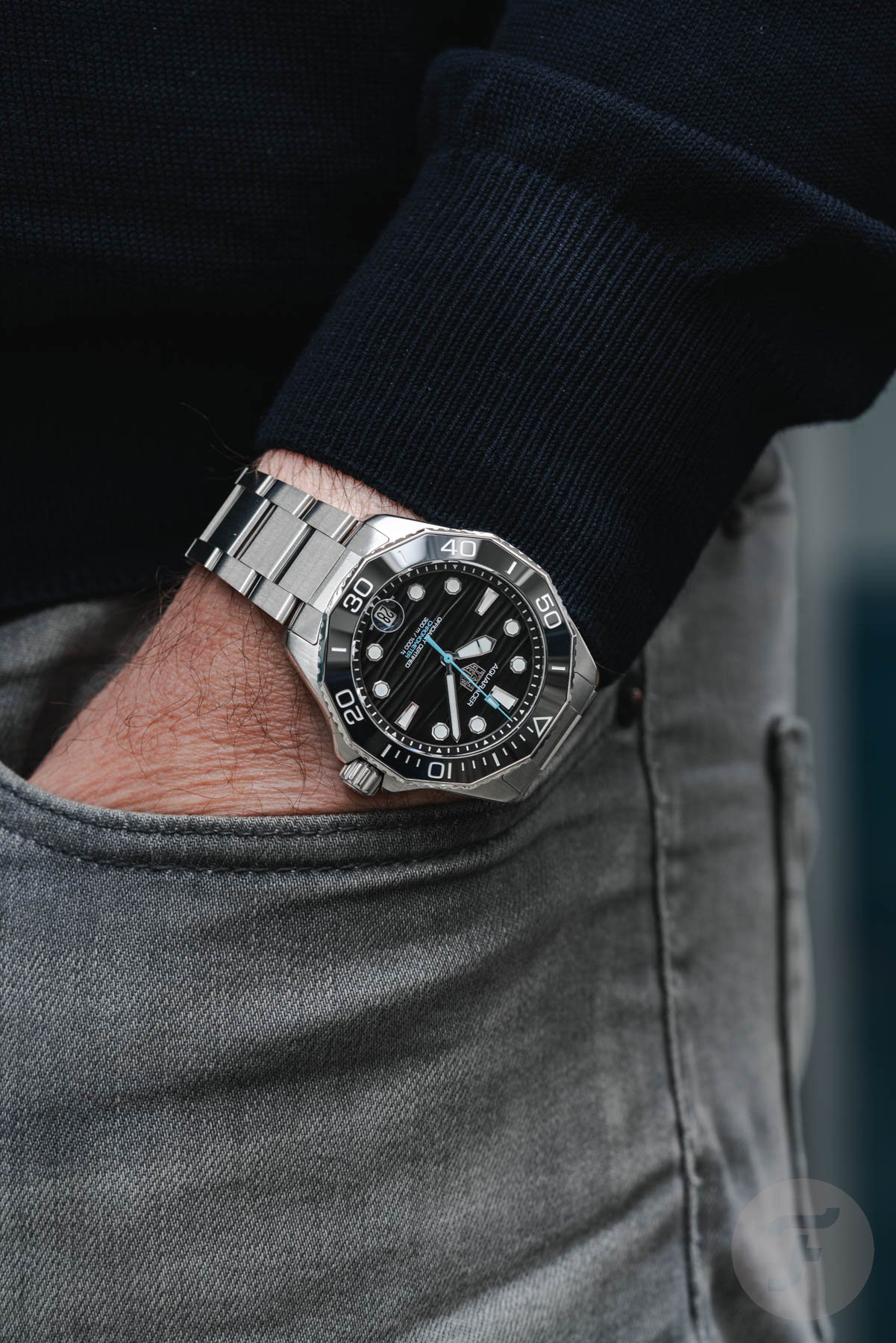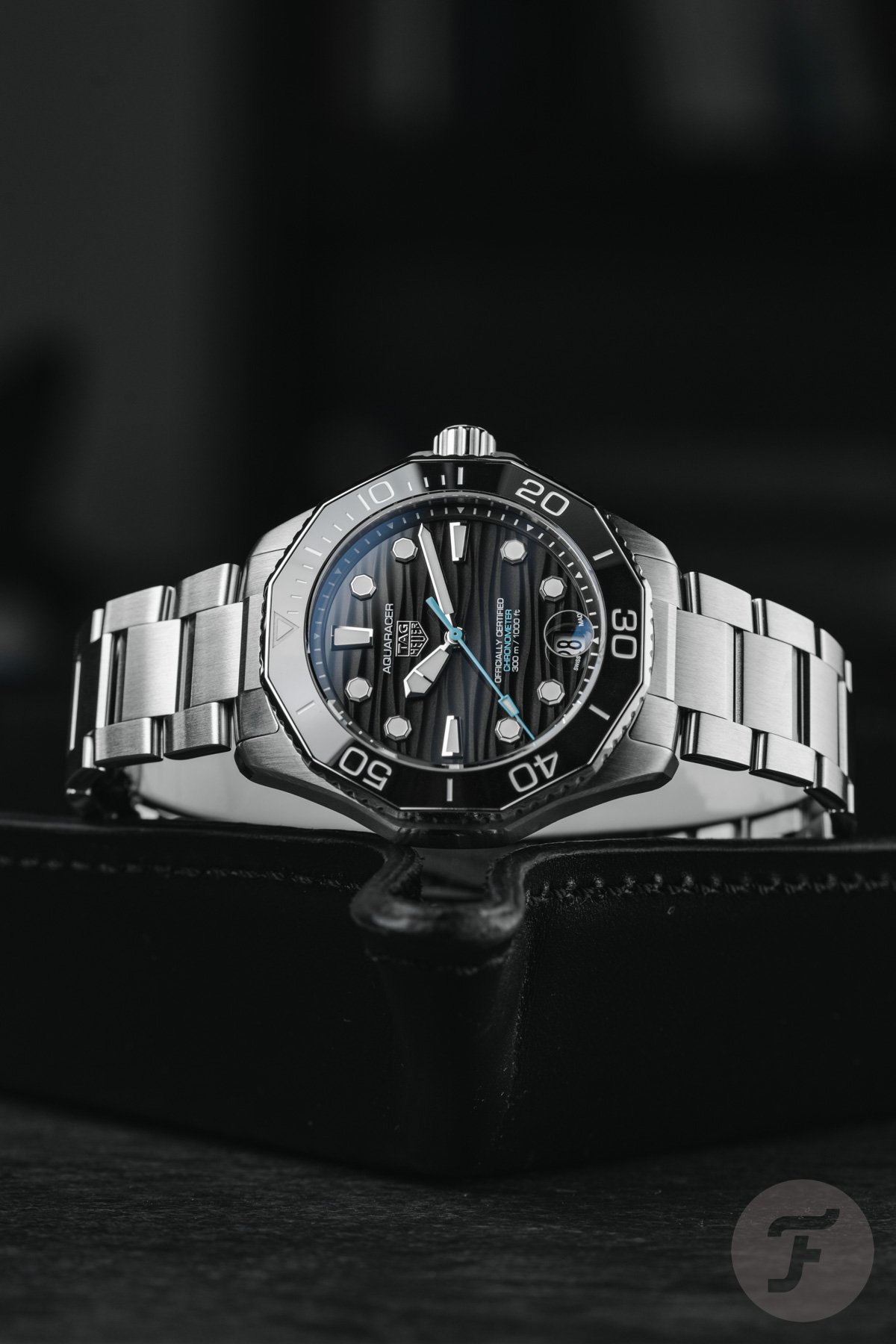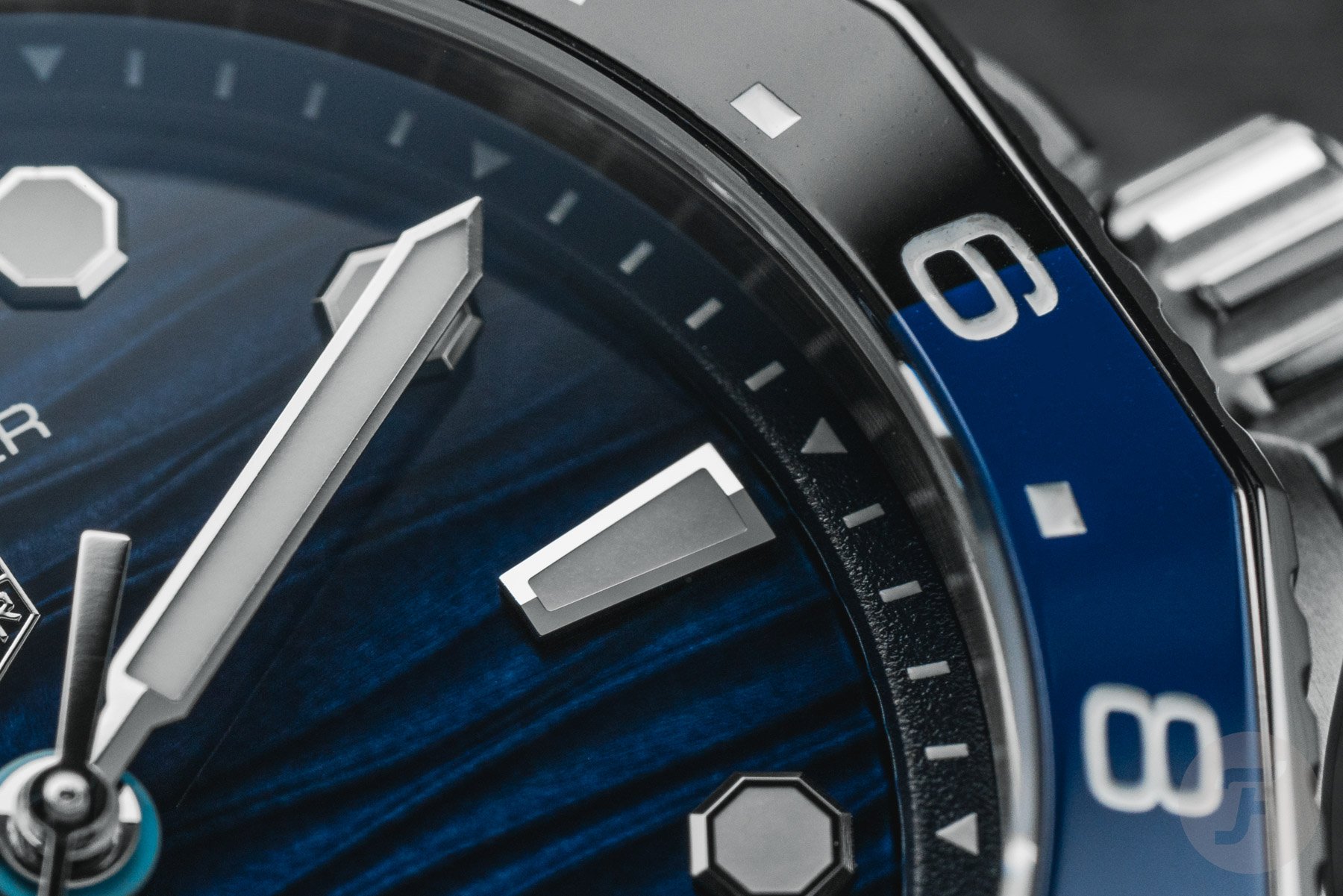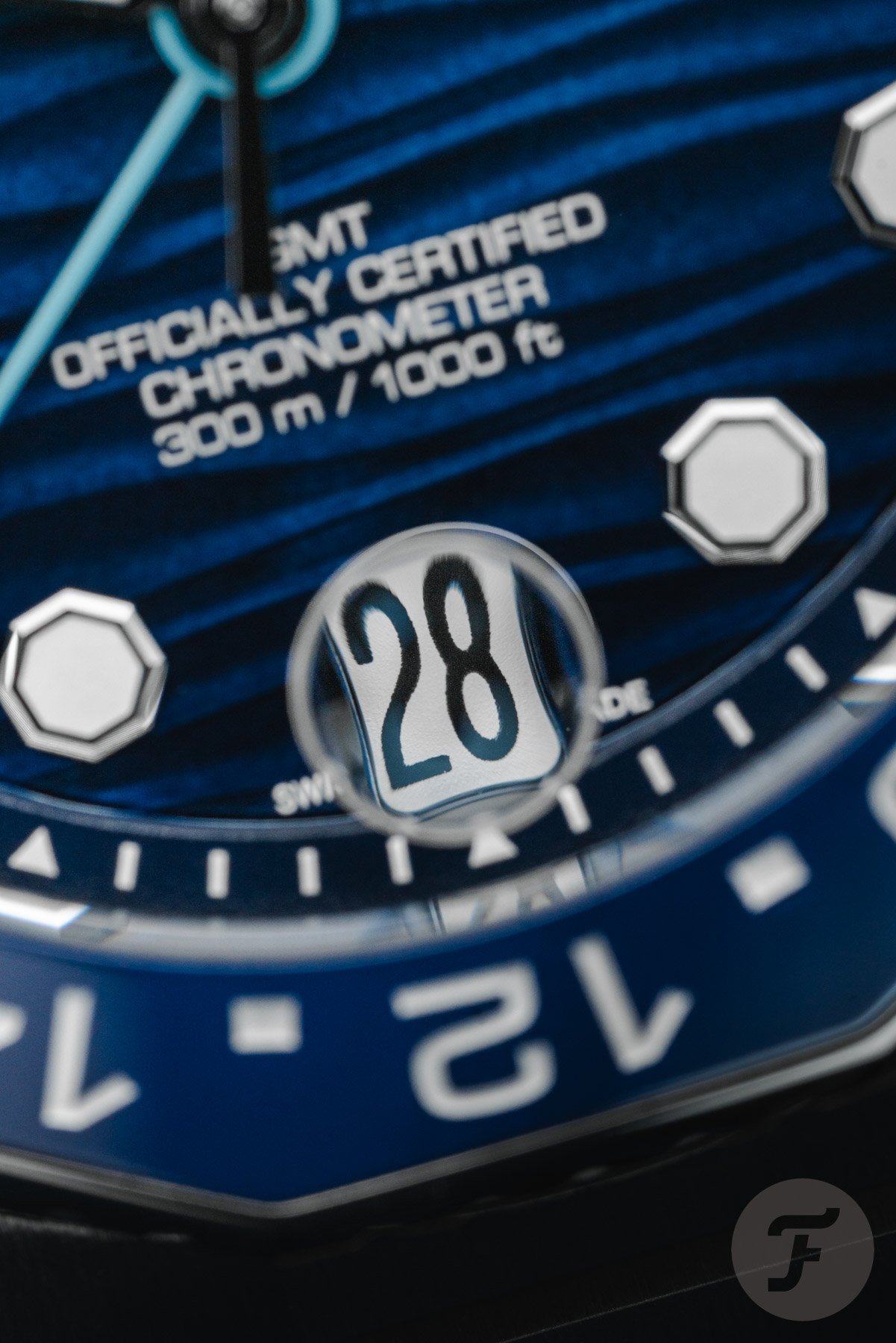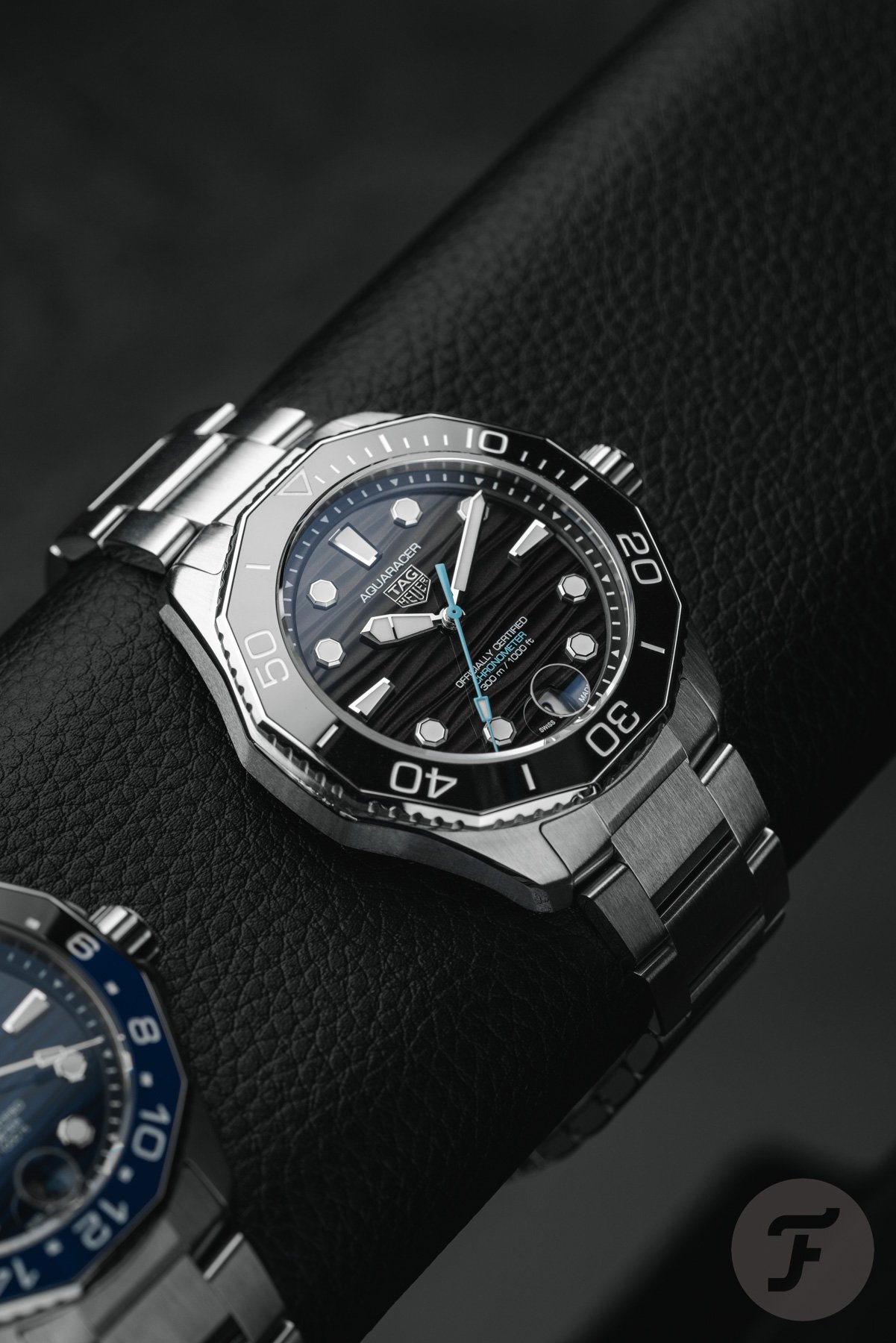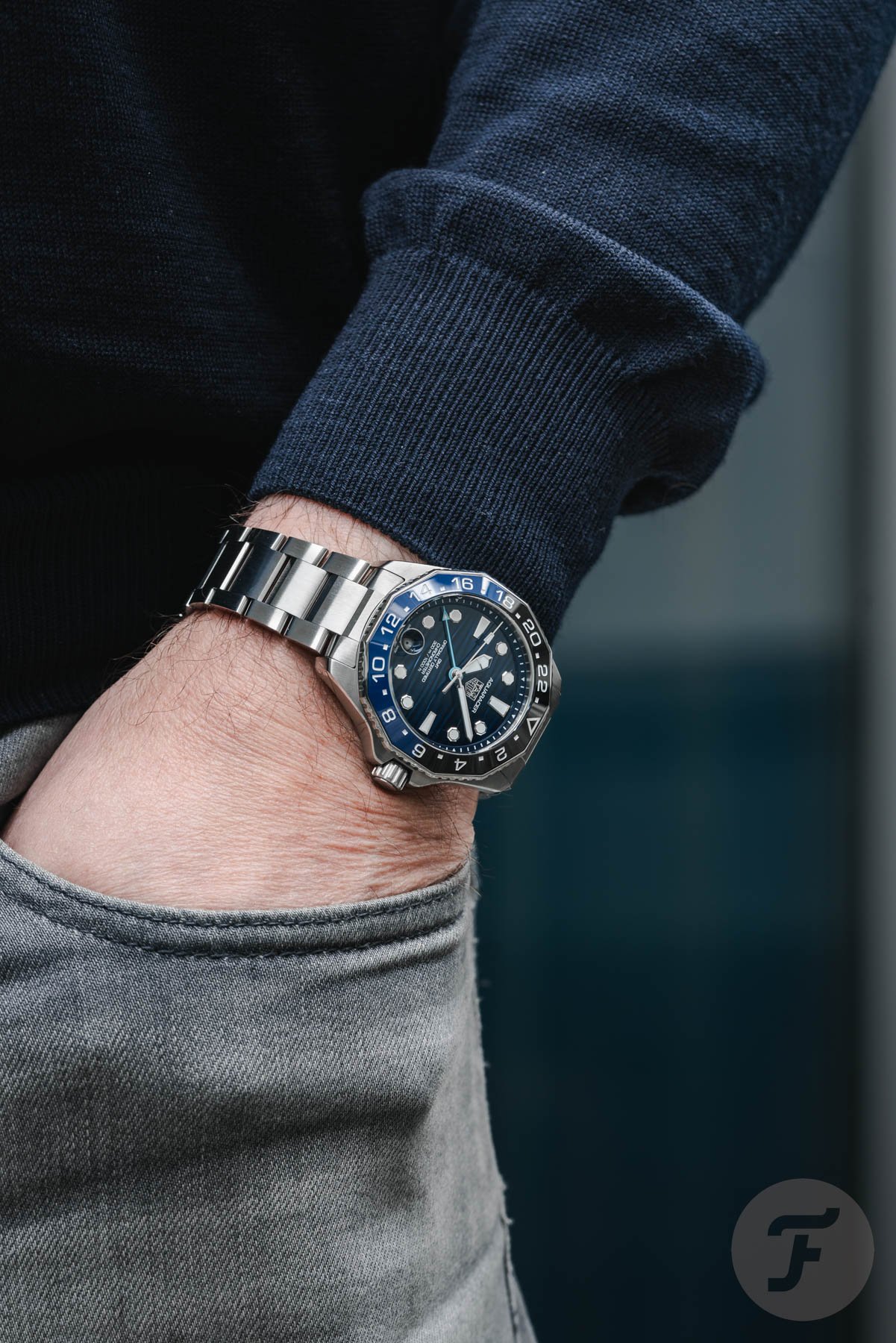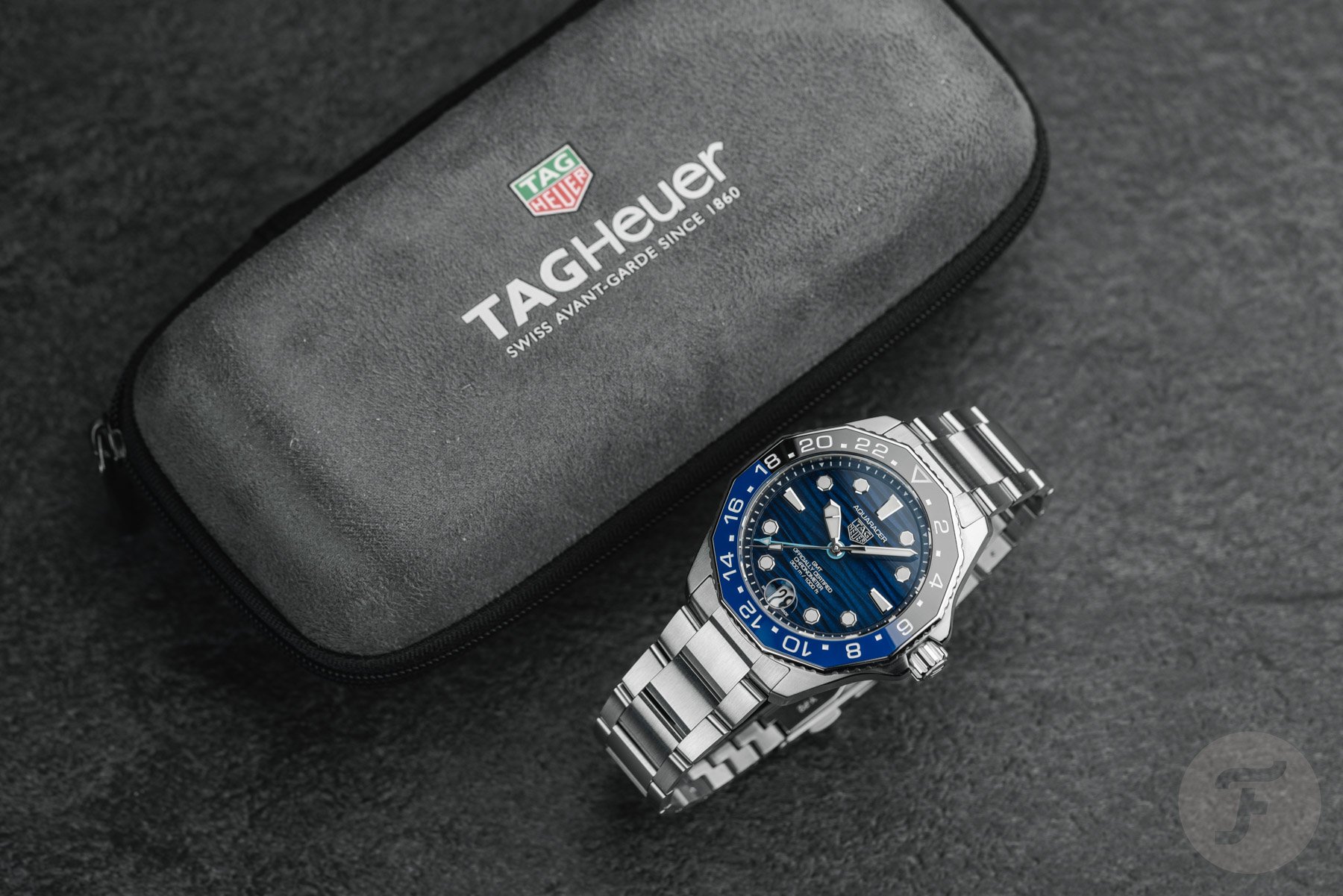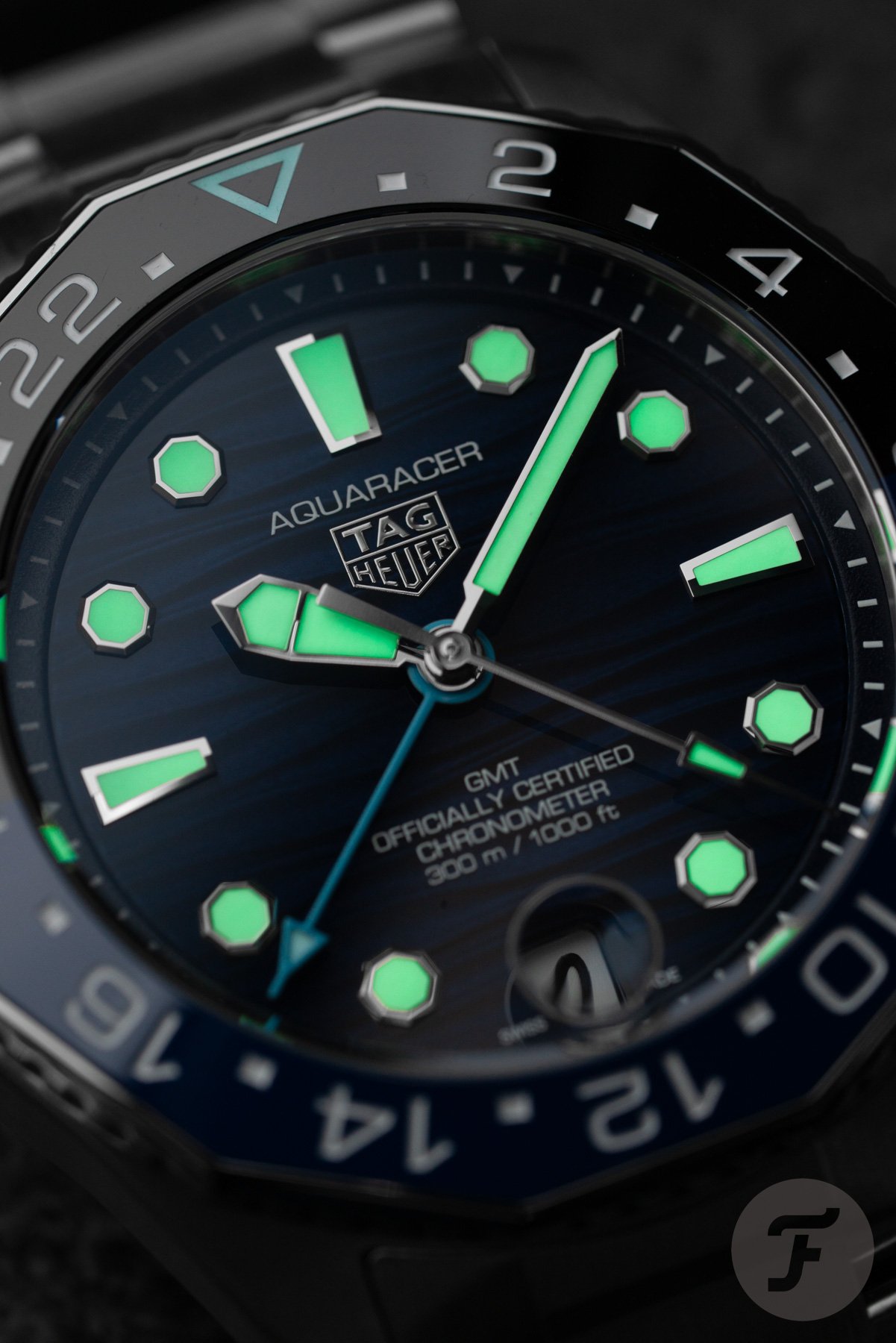Hands-On With The New TAG Heuer Aquaracer Professional 300 Date And GMT
As Mike Stockton recently announced on Fratello, TAG Heuer has updated its large Aquaracer. The 43mm model got a 1mm downsize, new caliber, and new dial, among other changes. Mike did a great job describing all the changes but did not have the chance to try the new watches on. Since then, I have, so let’s explore how these changes impact the subjective experience of handling and wearing these TAG Heuer Aquaracer Date and GMT models.
Let me refrain from rehashing all the specs here. Instead, let me refer to Mike’s introduction article from last week. This will be a part 2 of sorts, expanding on his foundation.
Downsizing the Aquaracer
Let me start with the new dimensions. The case shrunk by 1mm in diameter and gained 0.5mm in thickness. Naturally, such small changes do not make an earth-shattering difference. Still, on the wrist, it is noticeable.
On my 17.5cm wrist, the 40mm TAG Heuer Aquaracer is the one for me. The old 43mm version is a bit too much of a slab on my forearm. The 1mm shrinkage of these new additions helps, but it is still relatively large for me. Still, the modest 48mm lug-to-lug means these watches sit well within the confines of my wrist, reducing this to a matter of taste.
My advice would be to try to visit a dealer to see which size best suits your preferences. It truly is as simple as that sometimes. In some cases, I can make pleas for specific sizes as they do most justice to a design. In this case, TAG Heuer maintains the proportions and character quite well over the different sizes, so it comes down to taste. Keep in mind, though, that these two models, with their new updates, only come in the 42mm size.
A closer look at the new Aquaracer dial
The most eye-catching change isn’t the size of the new TAG Heuer Aquaracer. The first thing you will likely notice is the dial and its new texture. TAG Heuer applied a wave pattern, although it reminds me more of the sandy floor of a shallow sea. The waves aren’t the only texture, though, as these dials are also brushed with a sunburst pattern. The Date model is available with a black, blue, or green dial. The GMT version is fitted with your choice of blue or green.
Although the dial is quite beautiful in isolation since it is beautifully made, I feel it looks a bit lost within the Aquaracer. The old teak-deck dials perfectly fit the modern, angular design language. Sometimes, the juxtaposition of organic and angular shapes can reinforce both. In my humble opinion, this isn’t the case here. It looks a bit incongruous to me.
I feel the same way about the circular date magnifier on the underside of the crystal. To me, it clashes with the octagonal hour markers. You could argue that the entire bezel is a marriage of circular and octagonal shapes, which should provide context to the magnifier. As much as I try to see it that way, it just feels out of place to me.
A well-made watch
Of course, all the above is subjective. If the size is right for you and you love the dial, you may wonder if this is a good watch to buy and own. In this case, I’d wholeheartedly recommend the TAG Heuer Aquaracer Professional 300 Date and GMT updates. Overall, the feel is one of quality.
The bracelet includes a micro-adjustment system with sliding pushers on the outside of the clasp. Because of this, it doesn’t look overly refined, but the system does work very well. It is straightforward and pleasant to operate. It easily justifies the techy look, which isn’t out of place with the Aquaracer’s overall vibe.
The entire watch’s finishing is well executed. Nicely brushed surfaces are separated by sharp chamfers. The screw-down crown is nice, beefy, and easy to operate. It connects to the caliber TH31-00 (Date) or TH31-03 (GMT). These are made by Sellita’s AMT skunkworks. The specs of the calibers are truly up to date for 2024, including an 80-hour power reserve and chronometer certification. There is nothing to complain about on this front, although some purists would prefer a flyer GMT over the current caller setup.
Closing thoughts on the TAG Heuer Aquaracer Professional 300 Date and GMT
Overall, I feel this is a solid update to the Aquaracer. I am not a huge fan of the dial, but there is no denying this is a well-made watch with modern specs. TAG Heuer is entering a rather competitive playing field, though. The GMT is taking on the Longines Spirit Zulu Time, a flyer GMT that is €600 less on the bracelet (€3,500 versus €4,100). The diver contests with the slightly more expensive Tudor Black Bay (€3,750 versus €4,180).
But that is all theoretical. The Aquaracer has a distinct and much more contemporary style than most divers in the segment. Perhaps the Oris Aquis Calibre 400 is a more direct competitor, but I wonder if these brands have much overlap in clientele and target audience.
In any case, the new Aquaracers show TAG Heuer’s dedication to keeping its popular diver up-to-date. I often argue that a watch’s quality isn’t necessarily in its specifications, but it is still good to see brands improve on them nonetheless.
What do you think of the new TAG Heuer Aquaracer Professional 300 Date and GMT models? Let us know in the comments below.

